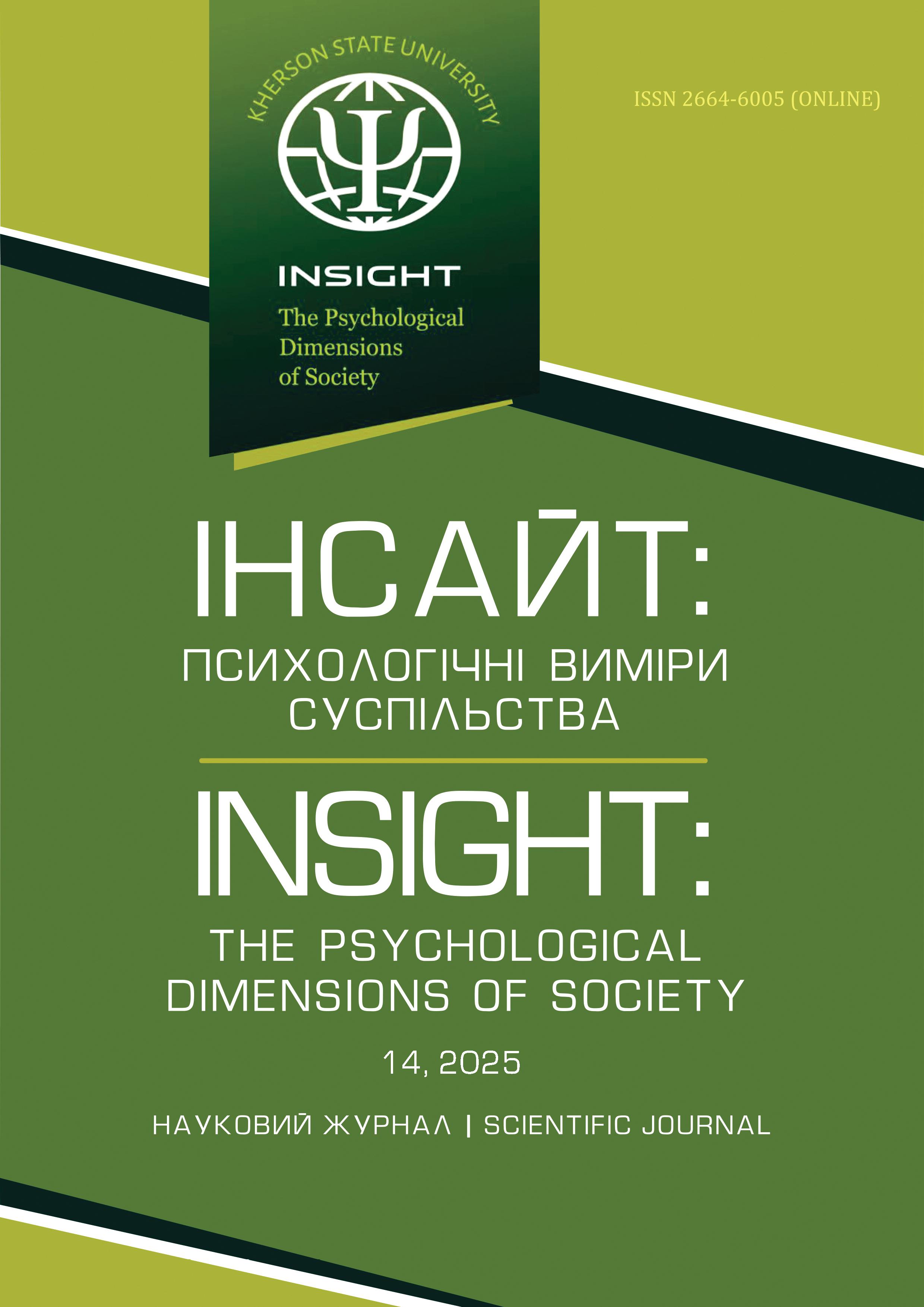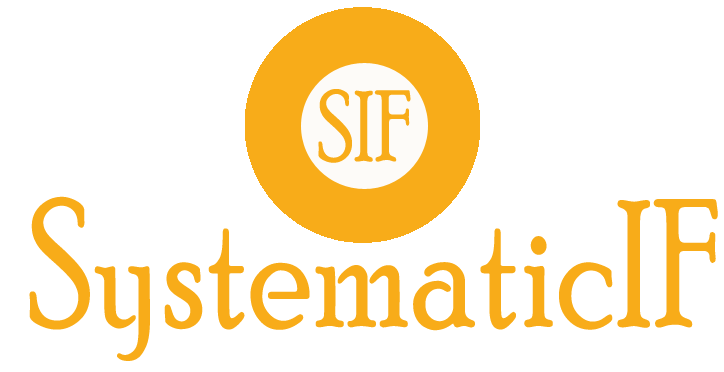Group cohesion of military units in the context of civil-military relations in Ukraine
Abstract
The purpose of this article is to demonstrate that in the current economic and political situation in Ukraine the implicit competition between military and civilian groups with relatively equal status can have a significant impact on the group cohesion of small military units. Methods and materials. This research focuses on the primary level of group cohesion, which is achieved by members of military unit through a process of assimilation the group’s idealized prototype. Small groups, the number of which is comparable to a platoon (25- 30 people), were studied. The use of interdisciplinary research methods, namely the psycholinguistic method of associative experiment, for the study of group cohesion of small military units makes it possible to expand the scope of analysis to a broader context and demonstrate the heuristic potential of psycholinguistic methods in studying the peculiarities of the macro-political order, the integral part of which is the army. The choice of several stimulus words and a comparative analysis of associations to these words enable to distinguish a two-level factor plan that contributes to the formation of group cohesion of a small military unit. Results and Discussion. At the first level, group cohesion is shaped by internal factors based on various aspects of similarity: 1) equal status within the boundaries of the military organization; 2) undertaking common tasks both during combat operations and military training; 3) commonality of identity and beliefs; 4) similar future prospects; 5) experience of common difficulties. At the second level, group cohesion is shaped by relations of power, political order, regime and individual institutions. Conclusions. In the context of Ukraine, the group cohesion of small military units is largely determined by attitudes toward a competing civilian group with relatively equal status. The main prerequisite for the emergence of this form of conflict is the situation where the reason to study at military institutes is the opportunity to get a civilian specialty in addition to the military one for free. Acquiring fundamental theoretical and professional competencies approximately equal to competencies acquired at civilian universities by students, cadets feel resource stress, which results in the creation of “cadet – student” opposition and different patterns of prejudice and discrimination towards civilians.
Downloads
References
Bury P. Mission improbable: The transformation of the British army reserve. Hampshire: Howgate, 2018. 226 p.
Cárdenas J.C., Mantilla C. Between-group competition, intra-group cooperation and relative performance. Frontiers in Behavioral Neuroscience. 2015. No 9. P. 33. https://doi.org/10.3389/fnbeh.2015.00033
Crandall C.S., Schaller M. Social Psychology of Prejudice: Historical and Contemporary Issues. Lewinian Press, 2005. 269 p.
García-Guiu C., Moya M., Molero F., & Moriano J. A. Transformational leadership and group potency in small military units: The mediating role of group identification and cohesion. Journal of Work and Organizational Psychology. 2016. No 32(3). P. 145–152. https://doi.org/10.1016/j.rpto.2016.06.002
Griffith J. Further considerations concerning the cohesion- performance relation in military settings. Armed Forces and Society. 2007. No 34(1). P. 138–147. https://doi.org/10.1177/0095327X06294620
Griffith J., & Vaitkus M. Relating cohesion to stress, strain, distintegration, and performance: An organizing framework. Military Psychology. 1999. No 11(1). P. 27–55. https://doi.org/10.1207/ s15327876mp1101_3
Hogg M.A., & Terry D.J. Social identity and self-categorization processes in organizational contexts. The Academy of Management Review. 2000. No 25(1). P. 121–140. https://doi.org/10.5465/ amr.2000.2791606
Käihkö I. Introduction to the armed forces and society forum on broadening the perspective on military cohesion. Armed Forces & Society. 2018. No 44(4). P. 563– 570. https://doi.org/10.1177/0095327X18763154
Käihkö I., Haldén P. Full-Spectrum Social Science for a Broader View on Cohesion. Armed Forces & Society. 2020. No 46(3). P. 517–522. https://doi. org/10.1177/0095327X19841669
King A. Broadening the Perspective on Military Cohesion? A Reply. Armed Forces & Society. 2021. No 47(3). P. 586–595. https://doi. org/10.1177/0095327X20947150 King A. The combat soldier: Infantry tactics and cohesion in the twentieth and twenty-first centuries. Oxford University Press, 2013. 554 p.
King A. The word of command: Communication and cohesion in the military. Armed Forces & Society. 2006. No 32. P. 493–512. https://doi. org/10.1177/0095327X05283041
Koval H. V. & Spitsyna L. V. Empathy as a resource of socio-psychological support in the system of factors of volunteering. Insight: the psychological dimensions of society. 2021. No 5. P. 30–45. https:// doi.org/10.32999/2663-970X/2021-5-3
Martiny S.E., & Rubin M. Towards a clearer understanding of social identity theory's self-esteem hypothesis / McKeown, R. Haji, & N. Ferguson. Understanding peace and conflict through social identity theory: Contemporary global perspectives. Springer International Publishing, 2016. P. 19–32. https:// doi.org/10.1007/978-3-319-29869-6_2
McCoun R.J. What is known about unit cohesion and military performance? National Defense Research Institute, Sexual orientation and US military personnel policy: Options and assessment Santa Monica, CA: RAND Corporation, 1993. P. 283–331.
McKinley C.J.; Masto D., Warber K.M. Social Identity Theory as a Framework for Understanding the Effects of Exposure to Positive Media Images of Self and Other on Intergroup Outcomes. International Journal of Communication. 2014. No 8. P. 1049-1068.
Owens M. Civil-Military Relations. In Oxford Research Encyclopedia of International Studies. The International Studies Association (ISA) and Oxford UniversityPress (OUP), 2017. DOI: 10.1093/acrefore/9780190846626.013.123. Retrieved 13 Jan. 2022, from https://oxfordre. com/internationalstudies/view/10.1093/ acrefore/9780190846626.001.0001/acrefore- 9780190846626-e-123
Salo M. The relation between group-level characteristics and group cohesion. Arlington, VA: U.S. Army Research Institute for the Behavioral and Social Sciences, 2006. 24 p.
Salo M. United we stand – divided we fall: A standard model of unit cohesion. Helsinki, Finland: University of Helsinki, Department of Social Research, 2011. 254 p Salo, M., & Siebold G.L. Variables impacting peer group cohesion in the Finnish conscript service. Journal of Political and Military Sociology. 2008. No 36. P. 1–18. Sheehan J. J. Where Have All the Soldiers Gone? The Transformation of Modern Europe. Boston: Houghton Mifflin, 2008. 304 p. Siebold G.L. Bonding in army combat units. Southern Sociological Society. Atlanta, Georgia, 1987. 34 p.
Siebold G.L. Key questions and challenges to the Standard Model of Military Group Cohesion. Armed Forces & Society. 2011. No 37(3). P. 448–468. https://doi.org/10.1177/0095327X11398451
Siebold G.L. The Essence of Military Group Cohesion. Armed Forces & Society. 2007. No 33(2). P. 286–295. https://doi.org/10.1177/0095327X06294173
Siebold G.L. The science of military cohesion / M. Salo, & R. Sinkko. The science of unit cohesion – its characteristics and impacts. Jävernää, Finland.: National Defense University. Department of Behavioural Sciences, 2012. P. 45–64.
Siebold G.L., & Lindsay T.W. The relation between demographic descriptors and soldier-perceived cohesion and motivation. Military Psychology. 1999. No 11(1). P. 109–129. https://doi.org/10.1207/ s15327876mp1101_6
Стернин И. Проблемы интерпретации результатов ассоциативных экспериментов. Вопросы психолингвистики. 2020. № 3(45). С. 110–125. https://doi.org/10.30982/2077-5911-2020-45- 3-110-125
Sundberg R. & Ruffa C. Measurements for the institutional cohesion dimension of the standard model of military group cohesion. Military Psychology. 2021. No 33(2). P. 92–103. https://doi.org/10.108 0/08995605.2021.1897491
Tajfel H., & Turner J. An integrative theory of intergroup conflict / Austin & S. Worchel. The social psychology of intergroup relations. Monterey, CA: Brooks / Cole, 1979. P. 33–47.
Turner J.C. Social comparison and social identity: Some prospects for intergroup behaviour. European Journal of Social Psychology. 1975. No 5. No 1–34. https://doi.org/10.1002/ejsp.2420050102
Vavryniv O. S. Empirical study of the professional empathy of future rescuers. Insight: the psychological dimensions of society. 2020. No 4. P. 57–72. https://doi.org/10.32999/2663-970X/2020-4-4
Verweijen J. Soldiers without an army? Patronage networks and cohesion in the armed forces of the DR Congo. Armed Forces & Society. 2018. No 44(4). P. 626–646. https://doi. org/10.1177/0095327X17740096
Authors who publish with scientific journal agree to the following terms:
• All scientific papers may be freely copied and distributed on any medium and in any format, provided that the references to the initial data of the scientific work are indicated.
• Authors retain copyright and grant the journal right of first publication with the work simultaneously licensed Creative Commons Attribution License .
• Authors are able to enter into separate, additional contractual arrangements for the non- exclusive distribution of the journal’s published version of the work (institutional repository, your website, monograph), with an acknowledgement of its initial publication in this journal.





































